Welcome
Welcome to The Austin Mohs Surgery Center. Our dedicated team of professionals offers skin cancer diagnoses and treatment options, including Mohs micrographic surgery, that are designed to effectively remove cancerous lesions while minimizing damage to surrounding tissues. We focus on providing patients comprehensive, compassionate care utilizing the most effective surgical skin cancer treatments available. Dr. Adam Mamelak is specialty-trained and highly experienced in Mohs Micrographic surgery. Our board-certified dermatologist and Mohs surgeon relies on a combination of education, experience, technology, and personal attention to help patients obtain successful outcomes that reduce risks to their health and minimize residual scarring.
At The Austin Mohs Surgery Center, you can expect commitments to safety, quality, and results with a conscientious approach. If you would like more information on skin cancer evaluations and treatment options, please contact us to schedule a consultation.
Skin Cancer Overview
Skin cancer is the single most common form of cancer that affects Americans today. Nearly a million new cases are diagnosed each year, and it’s estimated that as many as one in five people will develop some form of skin cancer in their lifetime. Fortunately, early detection dramatically reduces serious health risks, including death.
Skin cancer generally occurs as a result of exposure to ultraviolet (UV) radiation, including exposure to the sun, tanning beds, or even black lights. Though it is the primary cause, UV radiation isn’t the only culprit in skin cancer development. Tobacco smoke, genetic predispositions, and certain immunosuppressive medications can also contribute to a skin cancer diagnosis. It’s possible to reduce the risk of developing skin cancer with preventative measures, such as wearing protective clothing, applying effective sunscreens regularly, limiting sun exposure, and undergoing a yearly medical examination. Annual screenings can detect early signs of cancer and treat them before they can cause serious harm.
A skin cancer diagnosis can be scary, but there are many effective treatments available, especially if it’s caught early. In fact, melanoma skin cancer has one of the highest survival rates among all cancers. Approximately 80% of skin carcinomas appear on or near the face, so it’s important to minimize damage to the surrounding area when choosing a skin treatment. Advanced procedures like Mohs micrographic surgery and skin cancer reconstruction can help diminish scarring while eliminating cancerous lesions.
Types of Skin Cancer
What is MOHS?
Originally developed by Dr. Frederick Mohs while working at the University of Wisconsin, Mohs micrographic surgery is the single most effective and successful skin cancer procedure currently available, with a cure rate of over 99%. Specialized training programs managed by the American College of Mohs Surgeons and others in the United States train dermatologists to perform this state-of-the-art technique.
Mohs’ unparalleled success rate lays in its precision and advanced diagnostics. The process involves mapping the path of the cancer with a microscope, leading to the full removal of the tumor and all of its roots with very limited effects on the surrounding healthy tissue. It’s particularly advantageous in delicate areas of the face where functionality and aesthetics are of paramount concern, such as the lips, eyelids, and nose.
Because of its exceptional accuracy, Mohs is often used to treat difficult cases of skin cancer, including carcinomas that are especially aggressive or recurrent, have indistinct borders, or were previously treated with radiation. It’s also a superior option for patients with certain genetic disorders or suppressed immune systems.
Articles & FAQs
About Mohs Surgery
- What is Mohs Surgery?
- What is involved in the Mohs Surgery procedure?
- Is Mohs surgery the best choice for you?
- What does M.O.H.S. stand for?
- What qualifications should I look for in A Mohs Surgeon?
- What kind of training do Mohs Surgeons receive?
- Is Mohs Surgery covered by Insurance?
- What skin cancers are treated by Mohs Surgery?
- Why should I get Mohs Surgery to treat my Skin Cancer?
- Can Malignant Melanoma be treated with Mohs surgery?
Before Your Surgery
- What is the best way to prepare for my Mohs surgery?
- Health information your surgeon needs to know before having Mohs Surgery
Your Mohs Surgery
- Why Do I Need to Bandage My Wound After Mohs Surgery?
- 8 Possible Risks of Mohs Surgery
- Is Mohs Surgery a lengthy procedure?
- Does the doctor use general anesthetic or put me to sleep during Mohs surgery?
- How are skin cancer roots seen by your Mohs surgeon?
- How many stages are needed to remove a skin cancer with Mohs surgery?
- How is the skin repaired and closed after a tumor is removed with Mohs surgery?
- Will I need a skin graft after Mohs surgery?
- What is a Linear Closure and will it be used to close the skin after my Mohs surgery?
- How is a skin flap used to close skin after Mohs surgery?
- Is the skin always closed with stitches after Mohs Surgery?
- Why will my skin be stitched closed in layers?
- How many stitches will I have after Mohs surgery?
- Can my skin heal by itself after a Mohs Surgery?
- Who should repair my skin after Mohs surgery
After Mohs Recovery and Healing
- Why Suture Granulomas Develop & How to Treat Them
- Why Do the Lower Legs Take Longer to Recover from Mohs Surgery?
- What Activities Can I Do After Getting Stitches?
- What should I expect in the post operative period after Mohs Surgery?
- What is a Spitting Suture?
- What can I do to avoid getting a scar after Mohs Surgery?
- Can laser help my scar after Mohs surgery?
- Can anything go wrong after Mohs surgery?
- Does it take a long time to recover from Mohs Surgery?
- Activities After Mohs Surgery
- Do I need a bandage after Mohs surgery?
- Should I use antibiotic ointment after Mohs surgery?
- Is it possible to get a post-operative infection after Mohs?
- What should I do if I have bleeding from my Mohs surgical site?
- Numbness and changes in skin sensation after Mohs surgery
- Ice for pain and discomfort after Mohs surgery
- Skin strength after Mohs surgery
- My surgical site re-opened after Mohs surgery
- Why is my leg taking so long to heal?
- Do I need a full skin exam after Mohs surgery?
- Should I drive myself home after my Mohs surgery?
Other Skin Cancer Treatments
- Klisyri
- 5-Fluorouracil Cream (Efudex, Carac)
- Imiquimod Cream (Aldara, Zyclara)
- Cryotherapy (Liquid Nitrogen, Cryosurgery)
- Black Salve
- Curaderm BEC5
- Non-surgical Options for Treating Basal Cell Carcinoma
- Erivedge (Vismodegib)
- Odomzo (Sonidegib)
- Ingenol mebutate Cream (Picato)
- Photodynamic therapy for Precancerous Skin Lesion
- Sentinal Lymph Node Biopsy
Skin Tumors
- What Is the White Ring Around My Mole?
- When should I be concerned about a new spot on my skin?
- When is the growth on my skin considered "precancerous"?
- Actinic Keratosis
- Atypical Nevus/ Dysplastic Nevi
- Are there different types of moles?
- When is a mole considered atypical?
- Inflamed and irritated moles
- Skin Cancer imitators
Basal Cell Carcinoma
- Basal Cell Carcinoma
- How do I know if my skin lesion is a Basal Cell Carcinoma?
- Skin changes seen with Basal Cell Carcinoma
- How does Basal Cell Carcinoma grow in the skin?
- Where on the body does Basal Cell Carcinoma usually develop?
- Basal Cell Carcinoma Subtypes
- What treatments are available for Basal Cell Carcinoma
- Mohs surgery for Basal Cell Carcinoma
- What are the consequences of not treating a Basal Cell Carcinoma?
Squamous Cell Carcinoma
- Squamous Cell Carcinoma
- Bowen's Disease
- Keratoacanthoma
- How do I know if my skin lesion is a Squamous Cell Carcinoma?
- What are the risk factors for developing Squamous Cell Carcinoma?
- Could my medical condition predispose me to Squamous Cell Carcinoma?
- How does squamous cell carcinoma grow in the skin?
- Can Squamous Cell Carcinoma spread and metastasize?
Melanoma
- Malignant Melanoma
- Where on the body does Melanoma usually develop?
- How can I distinguish melanoma skin cancer from benign moles?
- Are there different types of Melanoma skin cancer?
Other Skin Malignancies
Skin Cancer Risks & Prevention
- Skin cancer rates reach epidemic proportions
- Should I Be Worried About My Inflamed Mole?
- How do I know if I have sun damage on my skin?
- Best methods for detecting skin cancer
- What is a Skin Cancer Screening?
- Do I need a yearly skin check?
- How do I perform a Self-Skin Exam for Skin Cancer
- Skin Cancer and Tanning
- How to talk to your teen about skin cancer
- Am I at Risk for Developing Skin Cancer
- Are Individuals with darker skin tones at risk for skin cancer?
- Does my job increase my risk for skin cancer?
- Are veterans at risk for skin cancer?
- Golf and Skin Cancer
- Should I worry about my child’s birthmark becoming cancerous?
- Solid Organ Transplant Recipients and Skin Cancer
- Could mole mapping help me and my doctor detect a skin cancer?
- Which age groups are at highest risk for developing Skin Cancer
- My doctor recommended a skin biopsy
- Can Vitamin B prevent skin cancer?
- Do Non-Steroidal Anti-Inflammatory Drugs prevent skin cancer?
- Can cosmetic procedures prevent skin cancer?
- Viagra and Melanoma
- Breast cancer and melanoma
Sunscreen & Skin Protection
- Skin Cancer Prevention
- Top 5 tips to prevent Skin Cancer
- How To Protect Yourself From The Sun
- What does SPF stand for?
- Is Sunscreen Safe
- Sunscreen Labels - what to look for
- Physical Sunscreens vs. Chemical Sunscreens
- How To Use Spray On Sunscreen effectively
- Missed a spot! Most common areas we forget to protect
- What is UPF?
- What kind of hat has the best sun protection?
- Unexpected places to get a sunburn
- What should I know about Tanning Beds?
- Vitamin D and Tanning
- Are Sunless Tanners good for the skin?
- What is the Fitzpatrick Skin Type Scale?
Dr. Mamelak and his Clinic
Insurance & Financing
The Austin Mohs Surgery Center accepts most major insurance plans. To find out if we accept your plan, contact our office at (512) 279-3376.Some of the insurances we accept include:

- Humana
- Multiplan
- Great West
- Texas True Choice
- Aetna
- Medicare Traditional
- Seton EPN
- Tricare
- BCBS
- PHCS
- United Health Care
- Cigna
Additional insurances we take include:
- Accountable Health Plan
- First Health
- Health Smart Preferred Care
- Scott&White
- Beech Street
- First Care
- Health Payors Organization
- USA Managed Care
- Coventry
- Galaxy
- Independant Medical System
Please note, if you have an HMO or Managed insurance plan, you may need a referral from your primary care doctor's office prior to scheduling an appointment.
*Self Pay Discounts and Payment Plans Available


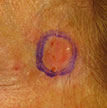
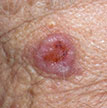
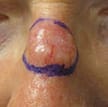
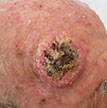
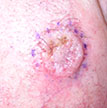
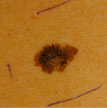
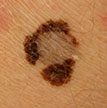
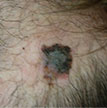



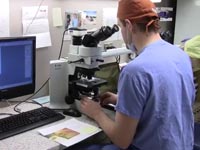

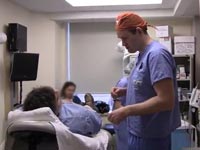
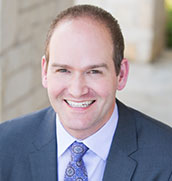
 Austin Monthly Top Doctor
Austin Monthly Top Doctor Castle Connolly’s Top Doctor
Castle Connolly’s Top Doctor Real Self Top Doctor
Real Self Top Doctor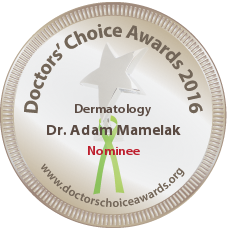 Doctor’s Choice Awards 2016
Doctor’s Choice Awards 2016 Diplomate
Diplomate